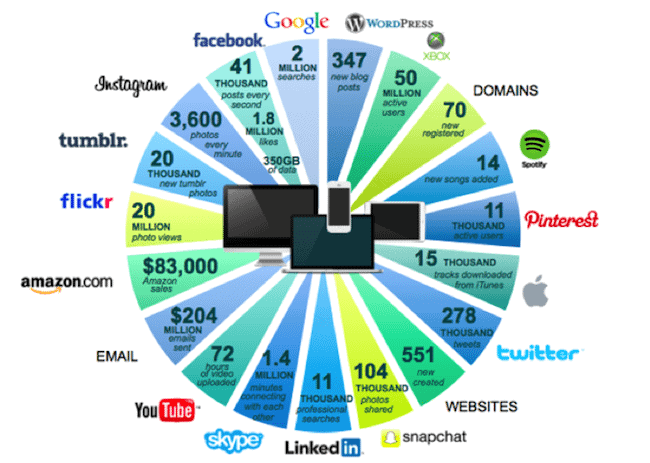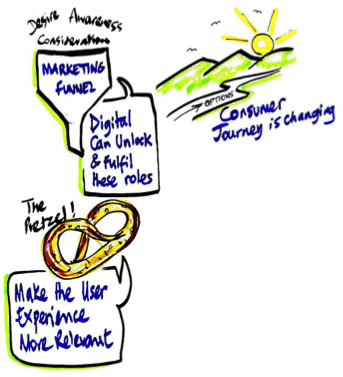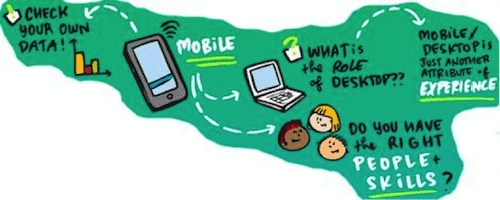
Lauren Stephens
Director, Global Marketing

Lauren Stephens
Director, Global Marketing
In September Skai continued the Future of Digital series across Asia Pacific, and one thing was clear – marketers in the region are ahead of their game and teeming with new ideas to take digital marketing to the next level in APJ.
Over 150 leading brands and agencies joined the Skai team in Sydney, Melbourne, Singapore, and Jakarta to hear from the influential panelists from Skai, Facebook, Google, Bing, Hootsuite, Domain, Lion&Lion, ValuKlik, Pinnacle, Urbanindo, and PasarPolis, to discuss the future of digital performance.futu
Sydney and Melbourne Panelists
The panel didn’t disappoint and what became apparent across all 4 events was that things are changing FAST. What the panel made clear was that it is how you embrace and capitalise on this change that makes successful marketing organisations thrive and businesses grow.
Part of this change has seen the entire funnel become performance marketing. It’s not just pay per action and managing direct conversions; this definition has become too narrow due to our ability to better track and quantify the entire customer journey, both offline and online. Facebook’s reach and frequency is a great example of a branding campaign taking on more performance attributes, and this is great for marketers who are looking for more measurable results to deliver to their leadership teams.
Steven Hartman, Skai’s Global VP of Marketing, discussed the increasing change in time spent online. “In July, Nielsen reported that there were 39 billion minutes spent online in Australia that month. These are all minutes that can be used to market to a consumer. But, with all this increased time online, where do we place our bets?”
The below is snapshot of what is happening every 60 seconds.

With all these opportunities and moments for us to connect with audiences, part of the challenge is knowing which touchpoints to use to make the most impact. Steve made a compelling point that:
“It’s time to evolve beyond the concept channel-based marketing into ‘in-moment’ marketing. In each potential interaction with a customer or prospect there are many parallel signals available to a marketer to decide whether to engage, and if so, using what ad for a certain price.”
The bottom line is if you spend all your time analysing all these moments and no time acting you will miss opportunities to connect with consumers.
Using technology like Skai and being able to interpret this data efficiently, you can take advantage and capitalise on this evolving landscape and react quicker to the moments going on below the surface. The key is being agile, and the more agile you are the more you can glide with ease through this busy ecosystem of channels, publishers, and device types to deliver the best outcomes for your business.
Shahrooz Chowdury, the former consumer marketing manager from Domain backed this up by stating that:
“Attention is scarce and needs to be earned. Consumers aren’t waiting around to be pincered by your perfectly orchestrated messaging. Be agile and fail fast.”
This really resonates with me as a marketer, as I think we have all been guilty of trying to create the perfect message and can sometimes miss out on the opportunity with the customer. By the time you have the perfect message, what your customer is interested has moved on; their moment of intent has passed and they have potentially gone to your competitor. Data and technology can help you get the best message out at the right time, to the right customer, enabling more agile decisions to be made, and programmatic has a huge part to play here.
Digital advertising and more specifically eCommerce, social media, search engines and mobile, have completely changed the way consumers travel along the purchase funnel. Our SVP Business Development Sivan Metzger who was on the Singapore panel put it perfectly when he said:
“Mobile has had a dramatic effect on the purchase funnel and the way we all behave as consumers, it is no longer a funnel but more of a purchase pretzel.”

Essentially the funnel is no longer a sequential series of events. It doesn’t have a definite start and end point. The journey has been flipped on its side like a continuous loop with a more balanced emphasis on customer lifetime value and loyalty. Mobile and apps have been a major instigator of this.
Consumers are more discerning than ever and to influence their purchase decision in the current landscape, marketers need to use data and technology to work this loop with speed and efficiency. From a Skai perspective, we see this loop as one of infinite opportunity, and when coupled with technology horsepower and innovation, it allows brands to become just as agile as their consumers.
As mentioned, mobile was a well debated topic for all the panels, which was documented in the live illustrations on the day (see below), and it was also interesting to see the audience’s take on what percentage they spend on mobile advertising. All four regions had around 60% of the audience say they spent between 20-50% on mobile advertising, with Jakarta taking the lead for the region with more than one-third of the audience indicating spend in the ‘50% or more’ range. This reflects the mobile first state of the country with most people relying on their phones rather than desktops to access the internet.

To see the full Illustration, click the relevant cities: Sydney, Melbourne and Singapore.
What was clear from all four events was that within the APJ region we are all experiencing similar challenges, but with varying levels of sophistication. The live audience poll revealed that most pressing challenges are ‘knowing which channels and platform to use’ and ‘how to measure ROI’. This was pretty consistent across all 4 regions.
The final question posed to the panel was to state in one word what the future of digital is. Answers included Agile, Cross-Device, Ubiquitous, Relevancy, eCommerce but the leading answer according the audience vote was Personalised. This aligns with the recent explosion of ad blocking and how consumers are becoming increasingly intolerant of ads that lack direct and immediate relevancy to them as individual.
With so much change and growth happening online, if you want to succeed you need to make sure you are using data and technology to deliver a seamless and personalised message to the right consumers at the right moment. That is the future of digital.
We use cookies on our website. Some of them are essential, while others help us to improve this website and your experience.
Here you will find an overview of all cookies used. You can give your consent to whole categories or display further information and select certain cookies.